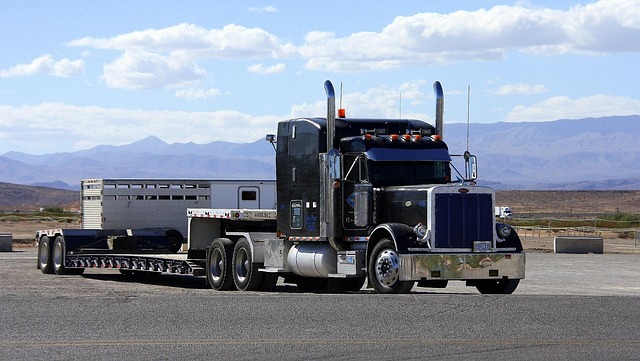Businesses operating multiple vehicles, particularly in trucking and transportation, face complex legal risks due to liability claims. Multi-truck liability insurance offers comprehensive coverage for fleet management risks, protecting against personal injuries, property damage, and legal fees from accidents involving any vehicle. Effective navigation requires understanding policy limits, assessing each vehicle and driver's risk, and staying updated on legislation changes. By adopting a multi-faceted approach including regular safety protocol reviews, compliance with regulations, employee training, open communication channels, and tailored multi-truck liability policies, businesses can significantly lower the likelihood of costly liability claims in today's dynamic business environment. Continuous monitoring, proactive policy updates, and regular audits are crucial for staying ahead of legal trends and fostering a culture of safety and compliance.
In the ever-evolving legal landscape, understanding multi-truck liability policies is paramount for businesses to mitigate risks and avoid costly liability claims. This comprehensive guide delves into effective strategies for identifying potential triggers and reducing exposure. From assessing risks to continuous monitoring, we explore best practices that serve as a foundation for risk mitigation. By implementing these tactics, organizations can stay ahead of legal challenges and ensure operational resilience.
Understanding Multi-Truck Liability Policies: A Foundation for Risk Mitigation

Many businesses, especially those involved in trucking and transportation, often face complex legal landscapes due to potential liability claims stemming from accidents or incidents. To effectively navigate this challenge, a solid understanding of multi-truck liability policies is essential. These policies are designed to provide comprehensive coverage for businesses operating multiple vehicles, addressing the unique risks associated with managing a fleet.
Multi-truck liability insurance offers protection against various claims, including personal injuries, property damage, and legal fees resulting from accidents involving any vehicle within the insured fleet. By understanding the scope of this coverage, businesses can make informed decisions regarding risk management. This includes choosing the right policy limits, ensuring proper risk assessment for each vehicle and driver, and staying updated on changes in legislation that may impact liability claims.
Assessing Risks: Identifying Potential Liabilities and Triggers

Assessing risks is a critical first step in mitigating potential liability claims. It involves identifying and understanding various factors that could expose an organization to legal responsibility. This process begins by conducting a thorough risk assessment, which includes analyzing business operations, activities, and environments for any areas of vulnerability. By examining these aspects, organizations can pinpoint specific triggers or scenarios that may lead to liability, such as accidents, product defects, or contractual breaches.
One effective strategy is to implement multi-truck liability policies, which provide comprehensive coverage for diverse risks. These policies are designed to protect against a wide range of liabilities, ensuring that businesses are shielded from financial burdens associated with legal claims. By proactively identifying and addressing potential risks, organizations can minimize the chances of facing costly litigation and maintain a positive reputation in today’s litigious climate.
Strategies to Implement for Reducing Exposure and Claims

To reduce exposure and claims, businesses should implement a comprehensive risk management strategy. This includes regular reviews and updates to safety protocols and procedures, ensuring compliance with relevant regulations. Investing in employee training on risk mitigation practices is also vital; well-informed employees can anticipate and prevent potential hazards. Additionally, adopting a culture of open communication encourages employees to report concerns without hesitation, allowing for prompt issue resolution.
Implementing multi-truck liability policies tailored to your industry can provide extensive coverage, protecting against financial losses in case of accidents or lawsuits. Regular risk assessments and audits are essential to identify vulnerabilities and implement targeted strategies. By staying proactive and adaptable, businesses can significantly lower the likelihood of costly liability claims.
Continuous Monitoring and Adaptation: Staying Ahead of Evolving Legal Landscape

In today’s dynamic business environment, staying ahead of the curve is paramount to risk mitigation. Continuous monitoring and adaptation are essential strategies for navigating the evolving legal landscape that can lead to liability claims. By proactively reviewing and updating policies, companies can ensure they’re aligned with the latest regulatory changes and case precedents. This includes regularly assessing multi-truck liability policies to cover emerging risks, such as new technologies or changing transportation regulations.
Adaptability allows organizations to respond swiftly to shifts in legal trends, industry best practices, and even public sentiment. Regular policy audits enable businesses to implement necessary adjustments, thereby reducing the chances of costly lawsuits stemming from outdated or inadequate risk management strategies. This proactive approach not only protects against immediate threats but also fosters a culture of safety and compliance that is crucial for long-term success.
In conclusion, mitigating risks that lead to liability claims is a multifaceted process. By understanding multi-truck liability policies, assessing potential triggers, and implementing proactive strategies, businesses can significantly reduce exposure. Continuous monitoring of the evolving legal landscape ensures that adaptation remains swift and effective, fostering a robust risk management framework. These steps are essential for navigating the complex world of liability prevention and ensuring long-term operational success.
